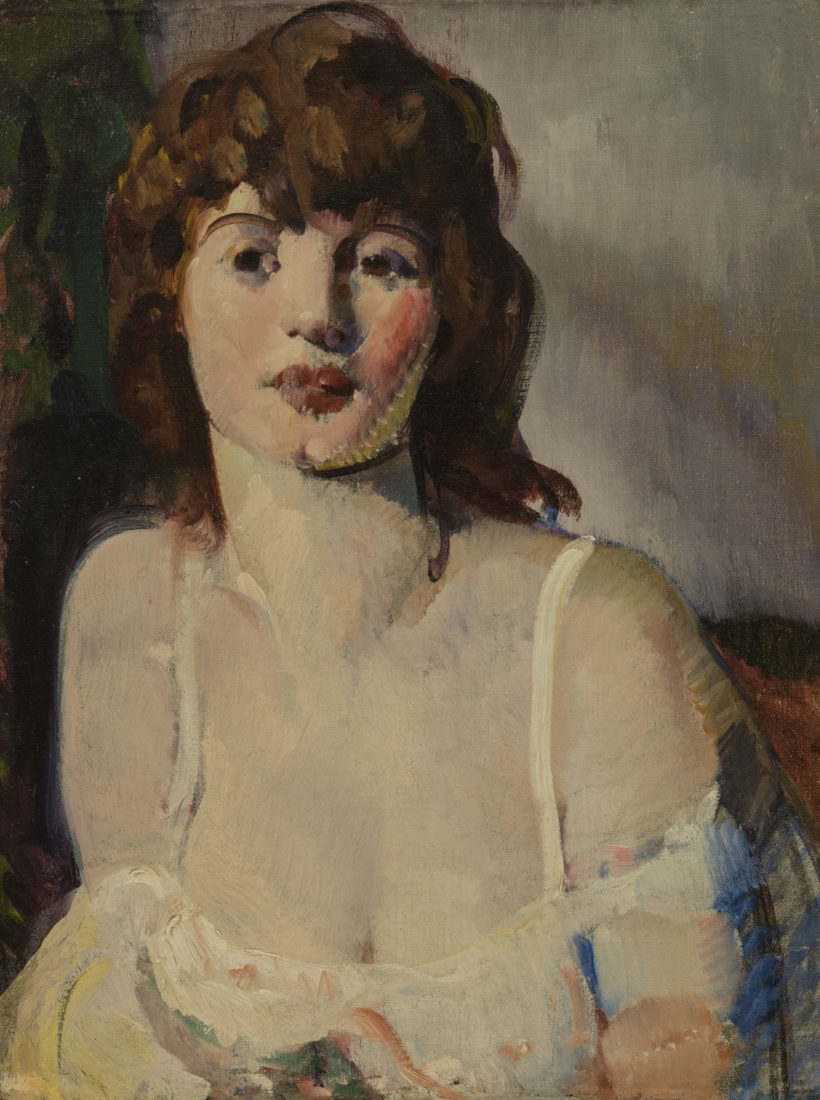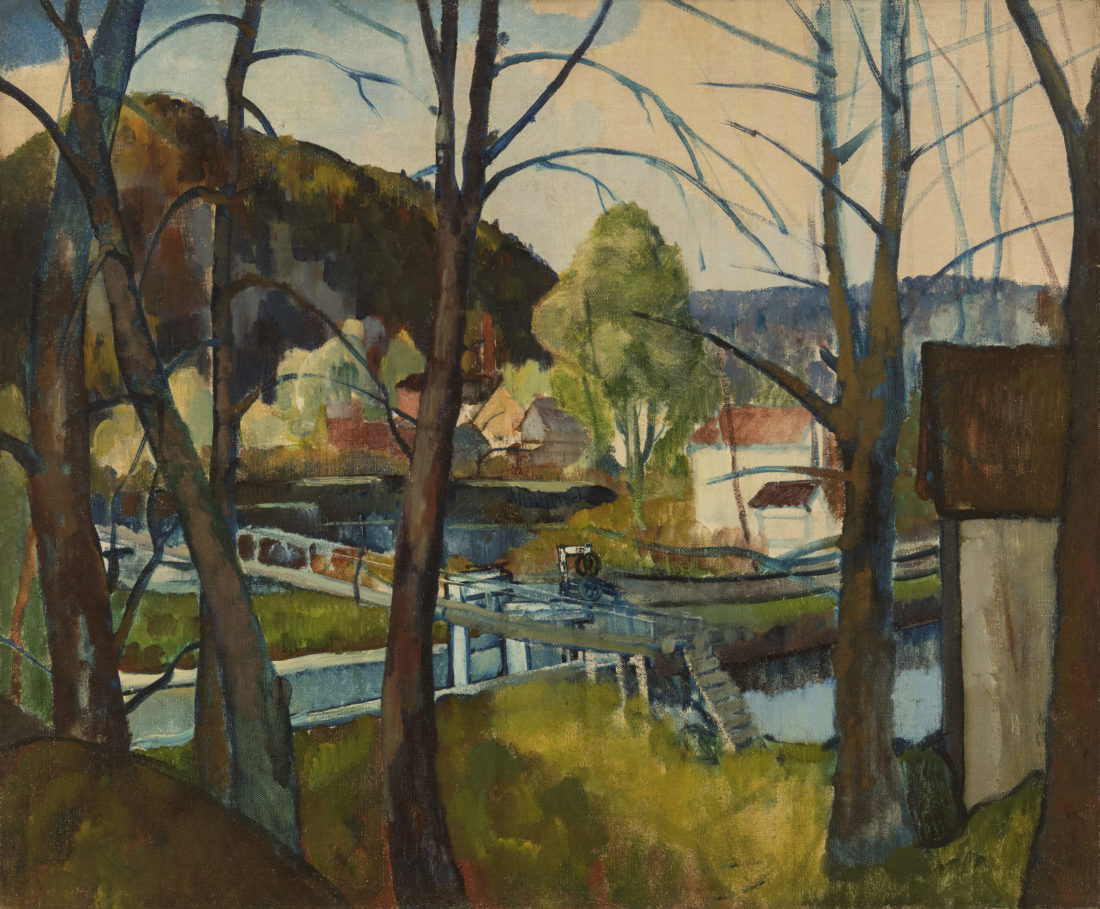While Leon Kroll has long been associated with painting sensuous nudes, he painted a wide range of subjects including spectacular landscapes, cityscapes, still lifes, portraits, figurative scenes and murals. Born in New York City in 1884, Kroll studied art at both the National Academy of Design and the Art Students League, earning his Bachelor’s and Master’s degrees respectively. After receiving numerous honors and participating in internationally renowned programs, Kroll landed his first one-man exhibition in 1910 at the National Academy of Design.
It was during that time that Kroll met George Bellows and was first introduced to Robert Henri, John Sloan, and their circle. During the years that followed, Kroll grew close to Bellows, often travelling with him to Maine or Santa Fe where they would paint for ten hours a day. While Bellows’s artistic genius as a realist was already recognized during this time, Kroll’s equally important works still remained largely overlooked. In 1913, however, Kroll was invited to exhibit at the Armory Show, which had a profound effect on his career. As Kroll’s works started to get noticed by major collectors and patrons of the Arts, he expressed his gratitude to the show for his artistic development: “The Show gave me a tremendous thrill. I couldn’t keep away from it. I went there every day, looked intensely… I was definitely pro…the astonishing energy, the daring and inventive quality impressed.”
Kroll’s active painting career spanned more than half a century, during which time he maintained his representational style rather than exploring the realm of abstractionism. Kroll’s style certainly evolved as he befriended artists such as Max Weber and Robert Delaunay who worked in a modernist vein. However, Kroll continued to be troubled by the concept of non-objective art and emphasized his belief in the representational, stating: “even the so-called nonobjective artists inevitably use subject matter. I find their subject matter uninteresting and limited. Without copying nature, which is impossible anyway, selection can be made for emotional or any other expression of the infinite variety provided by life and nature.” He believed in a creative process in which the artist served as an interpreter of nature; in which the emotional aspect of creativity and love of painting guided the artistic outcome.






